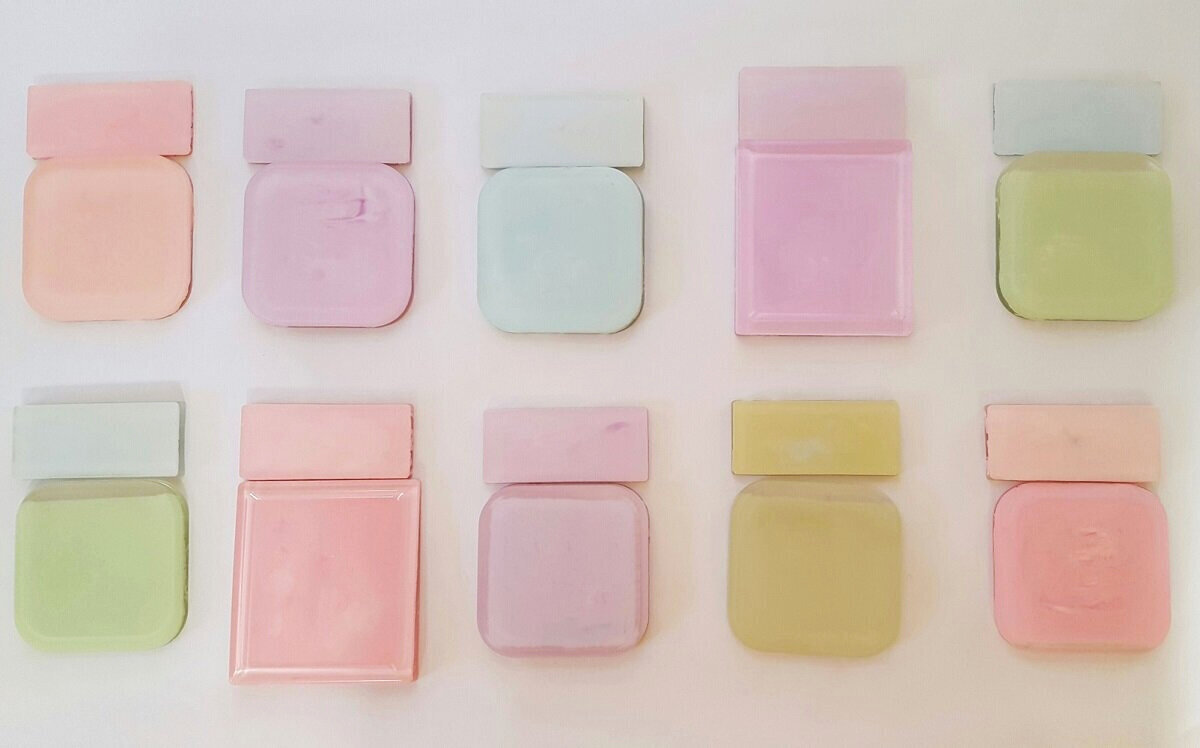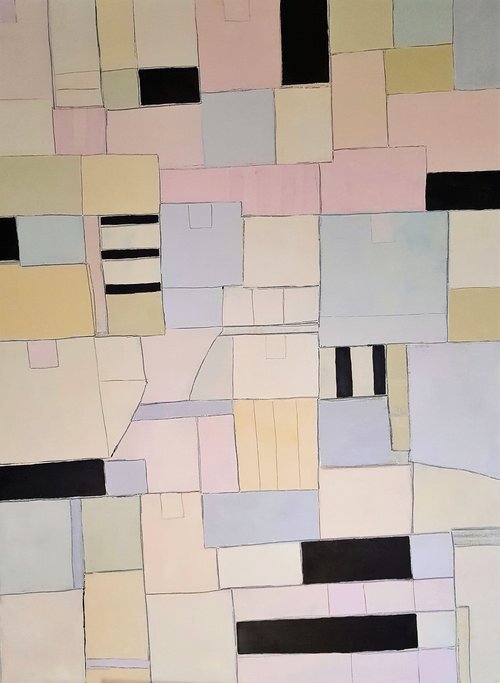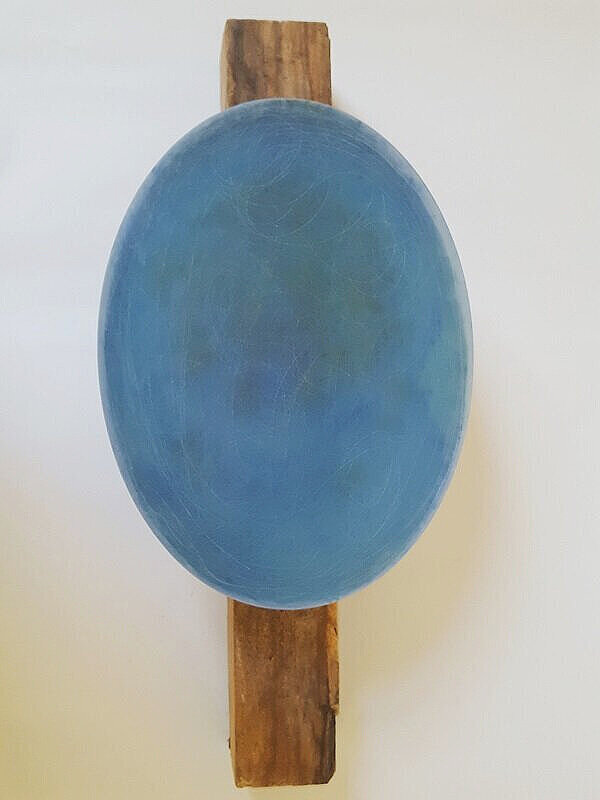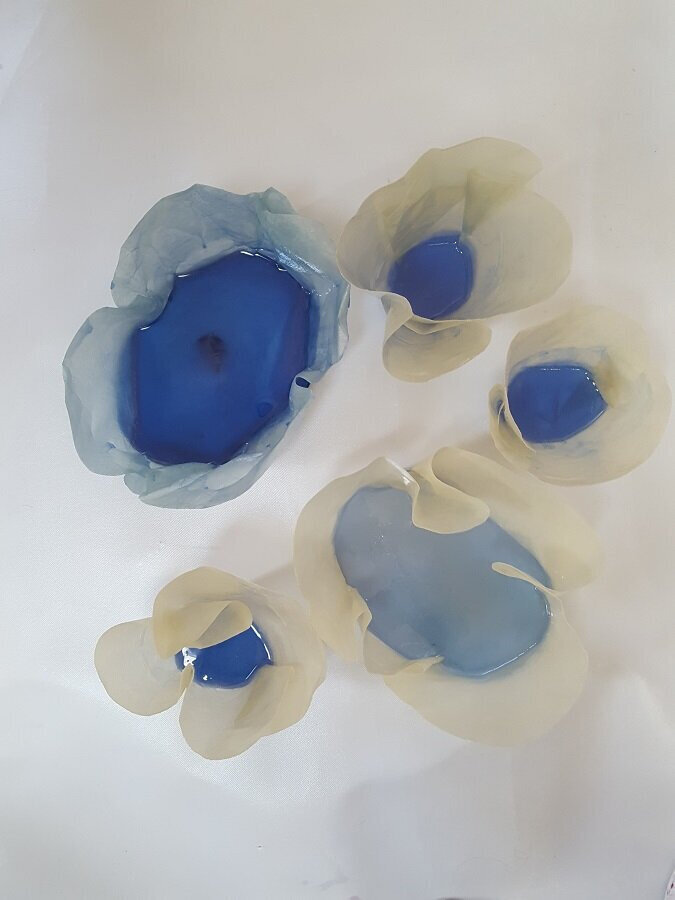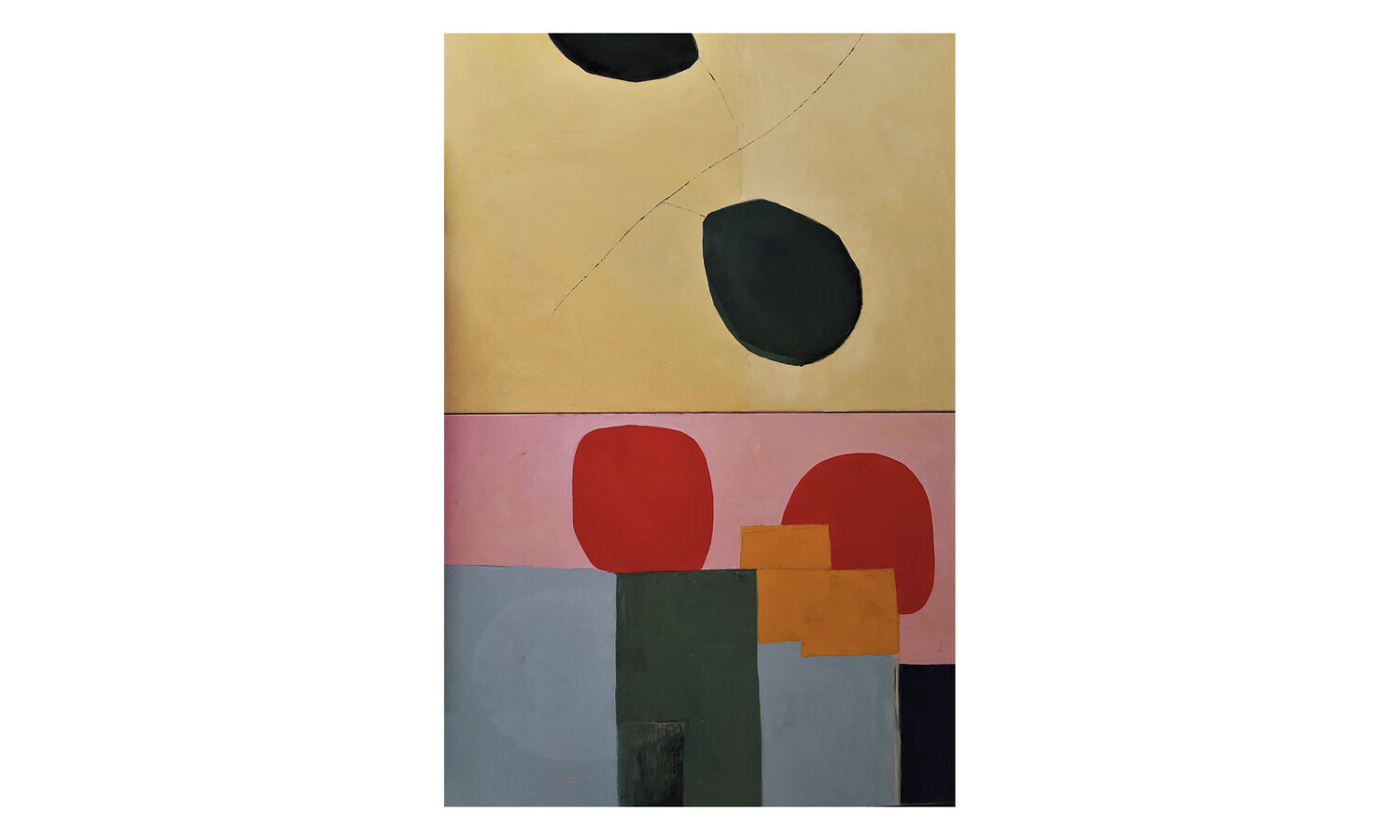Artistic vision, nurtured authentically from inception can create a limitless vortex of ideas for artists. For Chilean artist Carolina Muñoz, this vision is captured by a world where anything is possible. A world where humanoid characters are mere components of a bigger purpose. Muñoz’s artwork shows us the potential of what can happen when we let our conscious thoughts collide with the dream-like reality created by our subconscious. You never know what you may find.
Technique
There’s a purpose in the way Muñoz’s works are put together and they all hold an immense amount of detail. In Serie Negros, we see a character that is up to something but within the painting, there’s more happening in his surroundings as he is nonchalant about it. Time appears to have frozen in the painting, yet there is a sense of urgency coming from the motion-like gestures you see. There are even inanimate objects with faces, as you’ll find in Cuarto de Censura (2019), and they are part of it too. Everything going on in the work itself serves like particles of this universe and she is the creator inviting you to see it all, leaving no stone unturned. She is exposing a moment that makes the viewer feel like they just walked into a compromising situation they can’t unsee, much like a dream, when you are present but everything else is already in motion, it’s happening now.
For Muñoz, creating is a transcendental experience. One that can overwhelm her with thoughts into the medium to create by dissecting each piece within the idea, one by one:
“One of the important aspects of the [creative] process is when I enter the state of thought, the principles of making the work or the series. I live around it, I can't stop thinking, it's quite exhausting and overwhelming. It is first like a mental experimentation that lasts days or weeks that later lands on paper; a sketch. There are times that it arises in one night. But it is a process where you fill in the information and then you have to sort and select. When you have the sketch, the rest begins to flow smoothly… I think that drawing is a good ally in the process, it helps to organize the mind. Sometimes, a few times, I also write, before making a piece, I read a lot of things or watch artists' documentaries. Seeing art motivates me a lot, it makes me want to work in the studio.”
I very much enjoy the juxtaposition of the soft pastel colors in a harsh setting within Muñoz’s work. There’s a duality to her use of color and what she’s drawing or painting. The caricature-like drawings give the pieces a sense of child-like curiosity and mannerism that makes you look, only to find that what is being depicted is a very mature portrayal of the subconscious. I appreciate that Muñoz gives herself permission to cover the entire canvas to explore the complexity of drawing a whole scene encapsulated by a chaotic perspective through wiggled lines, realistic facial features, shock-like moments, and blurred-out visuals.
Muñoz explains how abstraction has recently played a part in her creations:
“My art changes and evolves due to the need to do work, one seeks to reach something that is not necessarily tangible, but rather the feeling that the work done has a projection or takes me where I want to go... For some time I have been looking at a lot of abstract art, the use of technique, color, and stain. It is difficult for me to conceive a work without thinking about the figuration, without thinking about the space and characters that make up a scene. In the last works, I worked on the abstraction contained in the form, within faces and bodies. I found it interesting that as the result of this, the characters were in a state of constant change, without one being able to determine or distinguish their identity and gender. The ambiguity in my work has to do with deformation, I think it is my way of abstracting.”
It is a beautiful way to use an abstraction that challenges the form itself to be contained within space. There is a sense of control that comes from that, like the need to tame something wild. By doing so Muñoz is challenging herself while applying a new concept that fits within her creative world, and that is what evolution in art is all about.
Vision
The characters you see in Muñoz’s paintings are an enigma and they are bound to make you take a closer look. They remind me of characters you may see in fables, much more surreal, contemporary fables that is. But they look like characters you don’t forget because they tell you stories that can be uneasy and uncomfortable to hear at times, causing you to question reality itself, the light and shadow sides of all we see, including aspects of our own minds and narratives.
Muñoz shares her vision on the role these characters play as essential components of her work:
“The characters generally perform different functions, in a kind of submission. They are constantly performing. Many times they are inside exhibition spaces helping to convey an idea, sometimes confusing and questioning the viewer. I think that the characters can reveal deep human behaviors and the relationship we have with the world. I am interested in creating and sustaining a world of my own, with a certain type of character, living, existing in these settings that surround the formality of the art world. It is also as if they were trapped in the inertia of this aesthetic structure of art. Characters with crooked noses, creeping deformations do not rest.”
We all have secrets and parts of ourselves that we don’t like to show to the entire world, but deep inside our subconscious, we know they exist and are very much a part of who we are today or were in the past. Whichever the case, sometimes we suppress those aspects of ourselves so much until we can no longer contain them. That exact feeling of exposure and vulnerability is what reminds me of some of Muñoz’s paintings. In Mujeres del Espacio (2020) and Dia de Ofrenda (2019), we see how the characters are basking in their reality that is very much present and they are living in it, like an explosion of subconscious thoughts that are now in the open to be faced and dealt with whether you like it or not.
Extra Notes
Muñoz is an artist whose vision evokes complex emotions within. The works allow for a constant need to observe and question not just through our personal realities but also of humanity overall.
When I asked the artist about what she loves most about being creative, she responded:
“The freedom to do what you want, to work from your imagination. See reality from the most sensitive corners. Convey imperceptible aspects, answer questions with answers that at the same time generate questions, thoughts, and inferences. I like to give importance to things that in reality very few give their place. Like the incredible thing about the mechanism of dreams. Or question theories that we cannot understand and give space to create one of our own.”
The artworks have an invisible sense of purpose, in which the characters are responding or acting to take on something bigger than them. It is that thought that confirms there are aspects we ought to pay attention to as humans since we have access to both conscious and subconscious realities. That nudge or intuition can provide knowledge about ourselves or the world, and this gives us awareness and understanding like a piece within a puzzle.
Interview translated from Spanish. For more about the artist’s work, please visit her website.
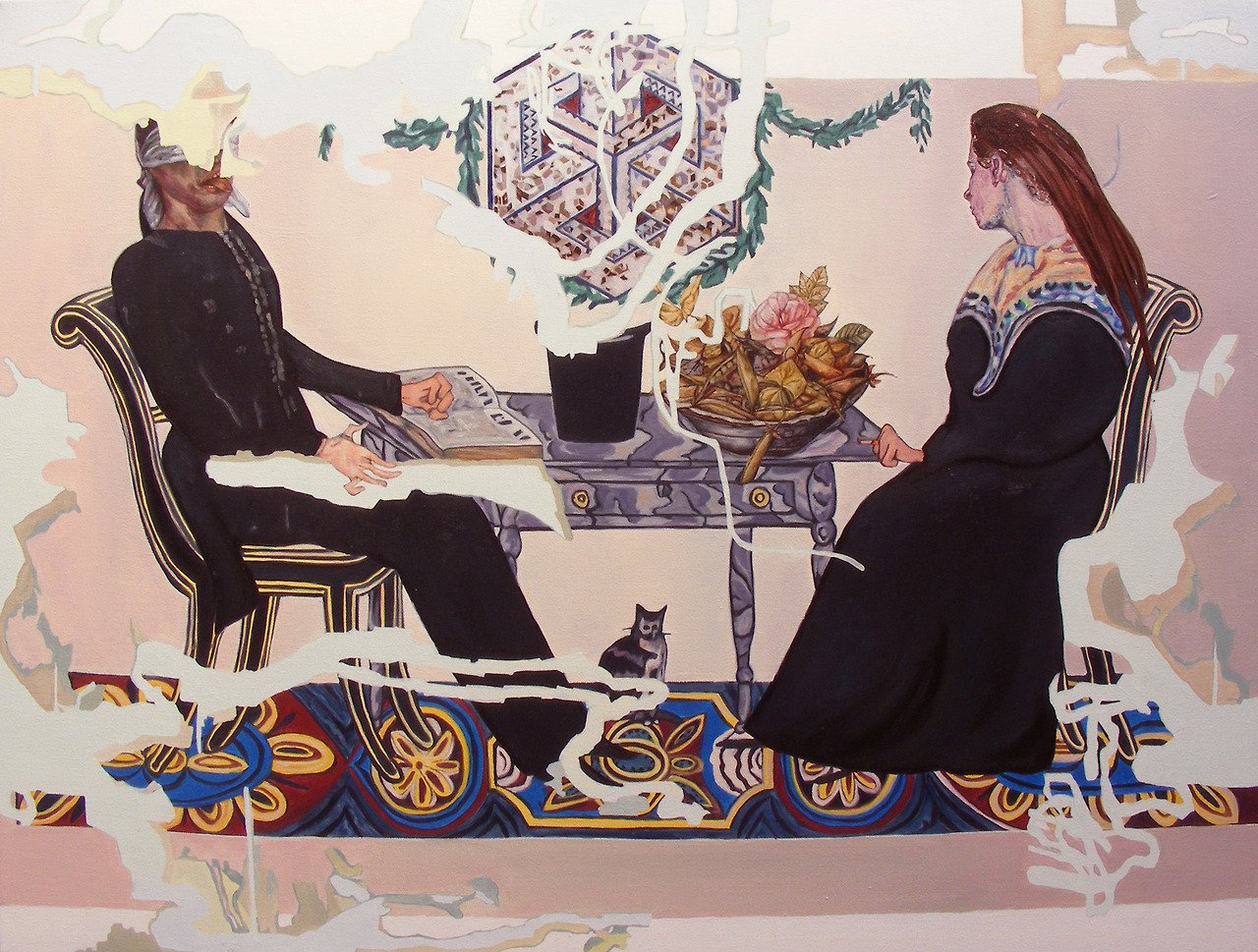
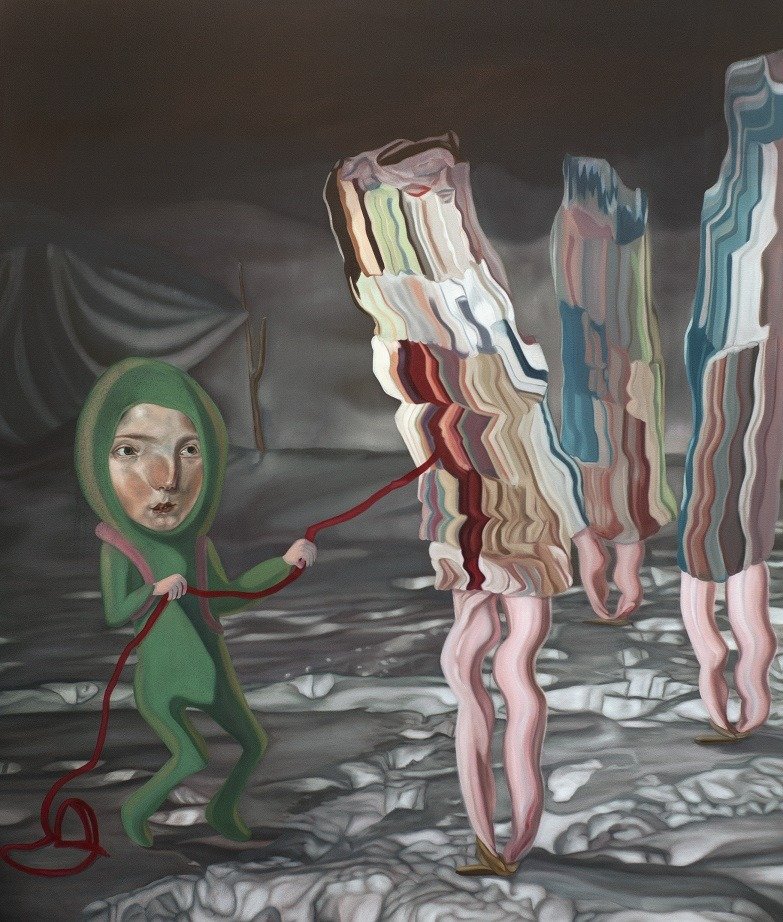
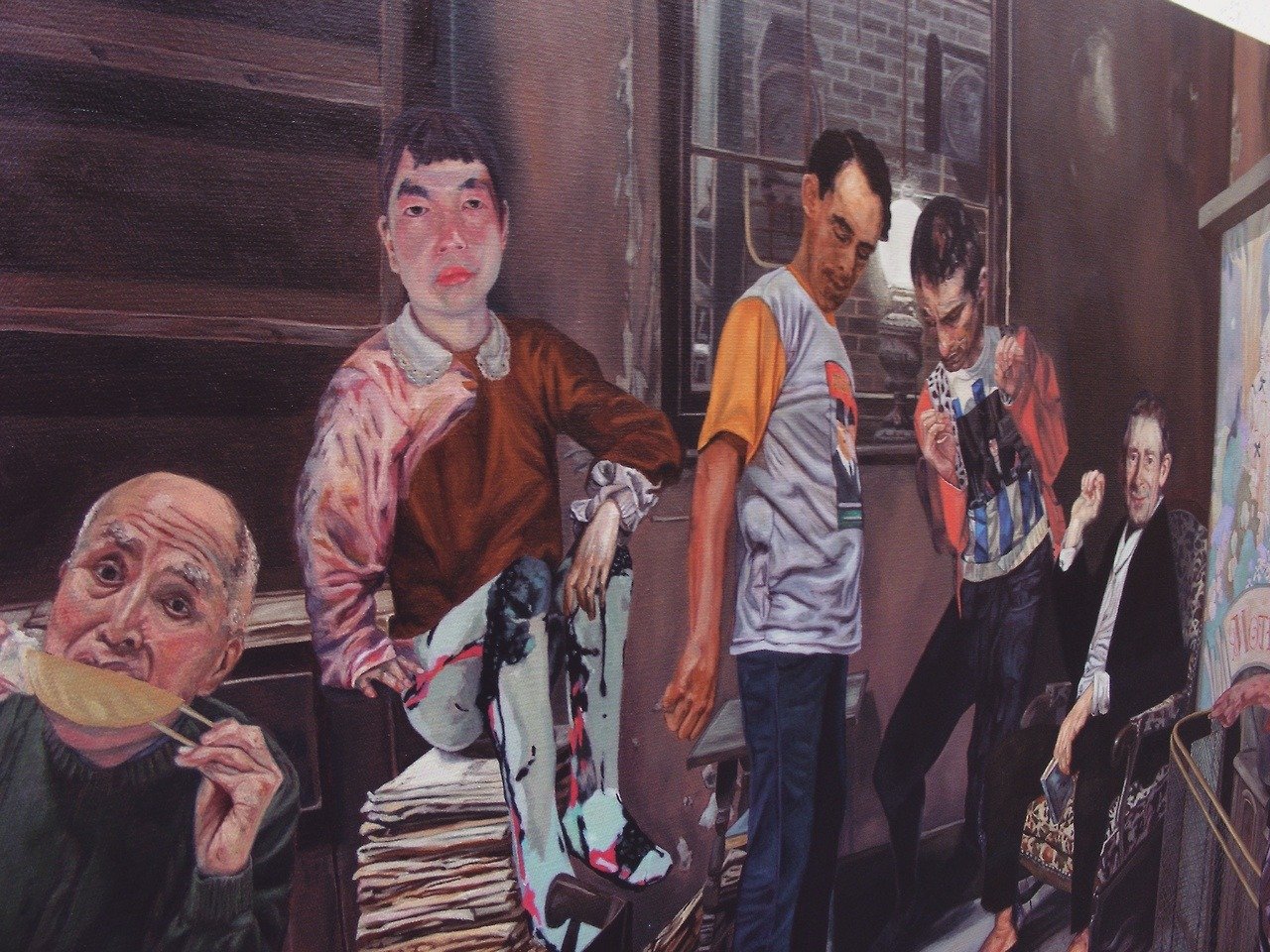
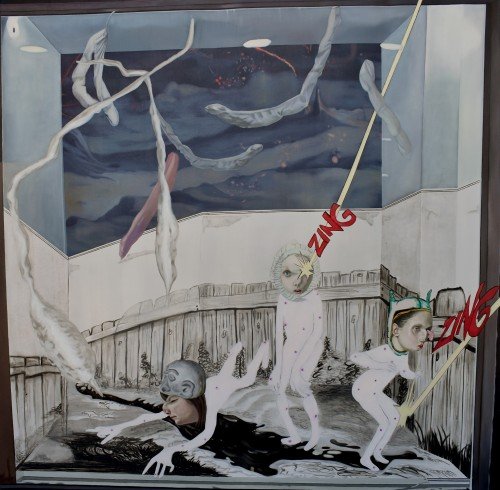
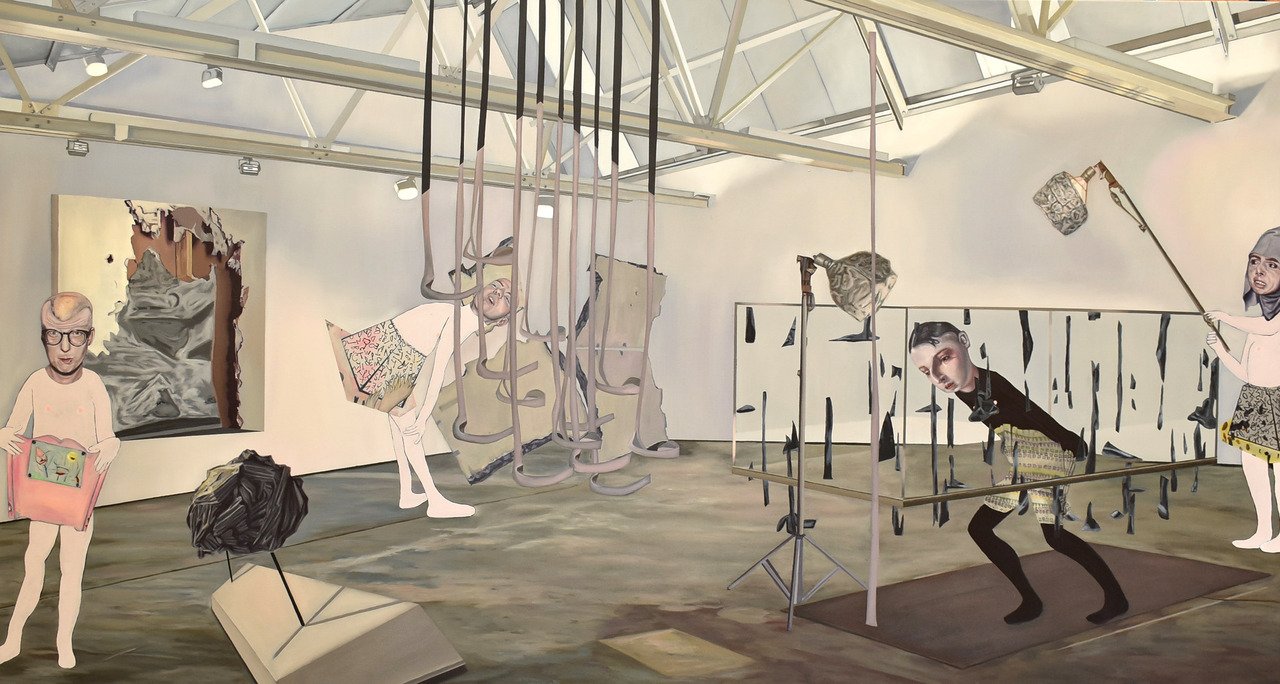


Today’s poem reflects Carolina’s understanding of the real world and one of dreams:
Tulips
BY SYLVIA PLATH
The tulips are too excitable, it is winter here.
Look how white everything is, how quiet, how snowed-in
I am learning peacefulness, lying by myself quietly
As the light lies on these white walls, this bed, these hands.
I am nobody; I have nothing to do with explosions.
I have given my name and my day-clothes up to the nurses
And my history to the anaesthetist and my body to surgeons.
They have propped my head between the pillow and the sheet-cuff
Like an eye between two white lids that will not shut.
Stupid pupil, it has to take everything in.
The nurses pass and pass, they are no trouble,
They pass the way gulls pass inland in their white caps,
Doing things with their hands, one just the same as another,
So it is impossible to tell how many there are.
My body is a pebble to them, they tend it as water
Tends to the pebbles it must run over, smoothing them gently.
They bring me numbness in their bright needles, they bring me sleep.
Now I have lost myself I am sick of baggage ——
My patent leather overnight case like a black pillbox,
My husband and child smiling out of the family photo;
Their smiles catch onto my skin, little smiling hooks.
I have let things slip, a thirty-year-old cargo boat
Stubbornly hanging on to my name and address.
They have swabbed me clear of my loving associations.
Scared and bare on the green plastic-pillowed trolley
I watched my teaset, my bureaus of linen, my books
Sink out of sight, and the water went over my head.
I am a nun now, I have never been so pure.
I didn't want any flowers, I only wanted
To lie with my hands turned up and be utterly empty.
How free it is, you have no idea how free ——
The peacefulness is so big it dazes you,
And it asks nothing, a name tag, a few trinkets.
It is what the dead close on, finally; I imagine them
Shutting their mouths on it, like a Communion tablet.
The tulips are too red in the first place, they hurt me.
Even through the gift paper I could hear them breathe
Lightly, through their white swaddlings, like an awful baby.
Their redness talks to my wound, it corresponds.
They are subtle: they seem to float, though they weigh me down,
Upsetting me with their sudden tongues and their colour,
A dozen red lead sinkers round my neck.
Nobody watched me before, now I am watched.
The tulips turn to me, and the window behind me
Where once a day the light slowly widens and slowly thins,
And I see myself, flat, ridiculous, a cut-paper shadow
Between the eye of the sun and the eyes of the tulips,
And I have no face, I have wanted to efface myself.
The vivid tulips eat my oxygen.
Before they came the air was calm enough,
Coming and going, breath by breath, without any fuss.
Then the tulips filled it up like a loud noise.
Now the air snags and eddies round them the way a river
Snags and eddies round a sunken rust-red engine.
They concentrate my attention, that was happy
Playing and resting without committing itself.
The walls, also, seem to be warming themselves.
The tulips should be behind bars like dangerous animals;
They are opening like the mouth of some great African cat,
And I am aware of my heart: it opens and closes
Its bowl of red blooms out of sheer love of me.
The water I taste is warm and salty, like the sea,
And comes from a country far away as health.
Sylvia Plath, “Tulips” from Collected Poems. Copyright © 1960, 1965, 1971, 1981 by the Estate of Sylvia Plath. Editorial matter copyright © 1981 by Ted Hughes. Used by permission of HarperCollins Publishers.
Source: Collected Poems (HarperCollins Publishers Inc, 1992)








